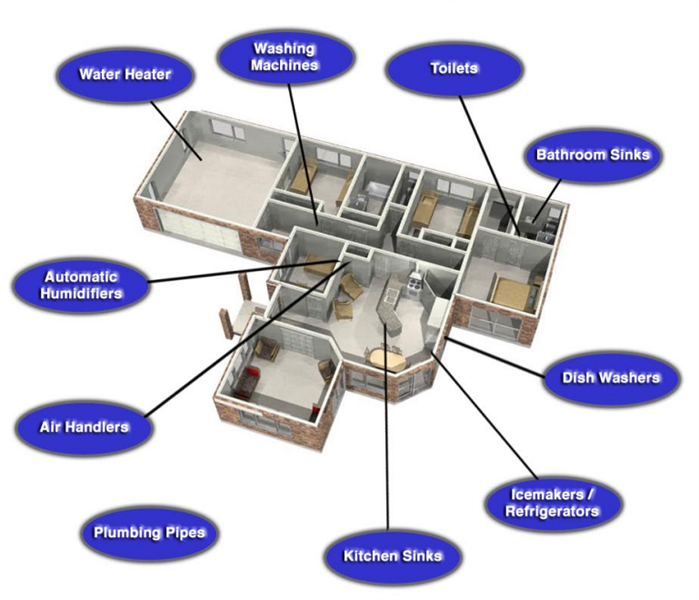Quick Tips for Preventing Water Damage
4/18/2016 (Permalink)
Quick Tips for Preventing Water Damage from Common Sources in Your Fernandina Beach, Yulee or Jacksonville Home:
Knowing the water damage warning signs in and around your home can help you avoid big repair bills as well as more time and trouble later. View the tips below for preventing water damage and what to do if and when it occurs.
Toilets
- After flushing, remain in or near the bathroom until the fill valve has finished refilling the bowl.
- If the bowl or tank begins to overflow, turn off the water at the supply valve.
- Inspect the flushing mechanism inside the toilet every six months.
- The fill valve should shut off when the float reaches the proper water level.
- Operate the shut-off valve to make sure the water supply will turn off properly. Replace if needed.
Washing Machines
- Turn supply valves off when not in use for extended periods of time.
- Do not operate the washing machine while the home is unoccupied.
- Inspect the water supply lines every six months.
- Check the hoses for cracks, kinks blisters, which are most commonly found near the hose connection.
- Washing machine manufacturers recommenmd replacing washing maching hoses every 5 years
- Consider using reinforced braided stainless steel hoses
Water Heaters
- Have a professional inspection of the anode rod at least once every two years and annually once the warrenty has expired. The rod may eventually corrode and leave the tank vulnerable to damage.
- Remove sediment by flushing the tank every six months. Sediment can build up faster in areas with hard water.
Plumbuing Supply & Drain Systems
*Homes 30 years old are three times as likely to have a plumbing supply or drain issue.
*Homes in the South, where plumbing is usually beneath the slab are twice as likely as their northern neighbors to have a supply issue.
- Visually inspect plumbing pipes annually, look for condensation around the pipes or an obvious leak and corrosion.
- Pay attention to your water bill. A signifigant increase could indicate a leak.
- Call a plumber at the first signs of rust-colored water, backed-up toilets or sinks and cracked or warped flooring.
- Insulate pipes in attics, basements and exposed exterior pipes to avoid freezing.
Refrigerator Icemakers
- Proper installation of the icemaker supply line hose is important to avoiding water damage.
- Ensure a tight connection between the hose and valve however, avoid over-tightening.
- If kinks are present, replace hose.
- Leave a 3 to 4 inch gap between the back of the refrigerator and the wall to prevent the hose from crimping.
- When pulling the refrigerator out for cleaning or service, avoid getting the hose caught beneath the wheels.
- Locate the water shut-off valve.
Roof Leaks
- Have a professional inspection annually.
- Request a detailed inspection report that includes the condition of the flashing, roof covering, parapets and drainage system.
- Repairs are needed if there are cracked or missing shingles or loose or missing granules; if flashing has deteriorated, paticularly around chimneys and vents; or if pooling water is present.
For More Information Visit:
Water Damage Restoration Process






 24/7 Emergency Service
24/7 Emergency Service
